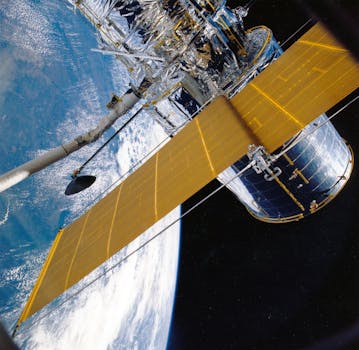GEO Satellites: Understanding the Technology and Applications of Geostationary Orbit Satellites

GEO Satellites: Understanding the Technology and Applications of Geostationary Orbit Satellites
GEO satellites, or geostationary orbit satellites, are a type of satellite that orbits the Earth at an altitude of approximately 36,000 kilometers, remaining stationary relative to a fixed point on the planet. This unique characteristic allows GEO satellites to maintain continuous communication with a specific region, making them an essential component of modern telecommunications and navigation systems. In this article, we will explore the history, technology, and applications of GEO satellites, as well as their benefits and future developments.
History of GEO Satellites
The concept of GEO satellites was first proposed by scientist Arthur C. Clarke in 1945, who envisioned a network of satellites in geostationary orbit that could provide global communication services. The first GEO satellite, Syncom 2, was launched in 1963 by NASA, and it successfully demonstrated the feasibility of geostationary orbit. Since then, numerous GEO satellites have been launched, with advancements in technology leading to improved performance, capacity, and applications.
Technology and Applications of GEO Satellites
GEO satellites operate by using a combination of solar panels and batteries to generate power, which is then used to transmit and receive signals. The satellites are equipped with transponders, which are devices that receive and retransmit signals, allowing for communication between different regions. GEO satellites have a wide range of applications, including telecommunications, navigation, weather forecasting, and Earth observation. They are used for television broadcasting, internet connectivity, mobile communications, and data transmission, among other services.
Benefits and Future Developments of GEO Satellites
The benefits of GEO satellites are numerous, including global coverage, high-capacity transmission, and reliability. They provide a cost-effective solution for telecommunications and navigation services, especially in remote or underserved areas. Future developments in GEO satellite technology are focused on improving capacity, reducing costs, and enhancing services. The introduction of new technologies, such as high-throughput satellites and satellite constellations, is expected to further expand the capabilities of GEO satellites.
Challenges and Limitations of GEO Satellites
Despite the many benefits of GEO satellites, there are also challenges and limitations associated with their use. One of the main limitations is the risk of satellite congestion, which can lead to reduced performance and increased interference. Additionally, GEO satellites are vulnerable to space debris, solar flares, and other environmental hazards. To address these challenges, satellite operators and regulatory bodies are working to develop new technologies and guidelines for sustainable satellite operations.




